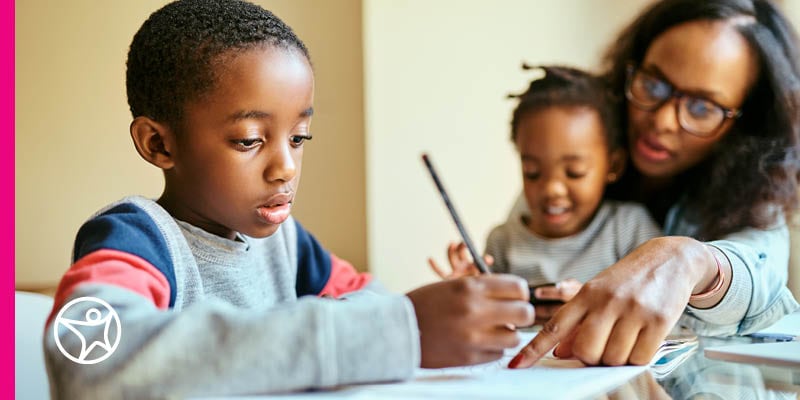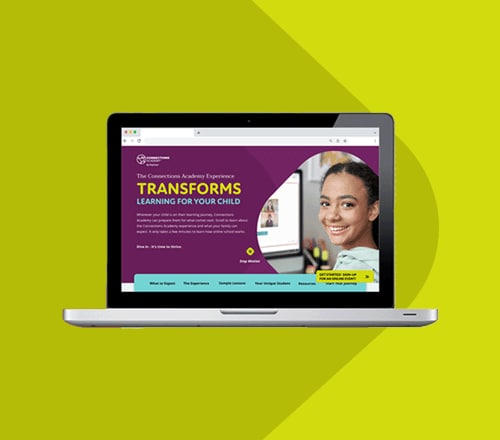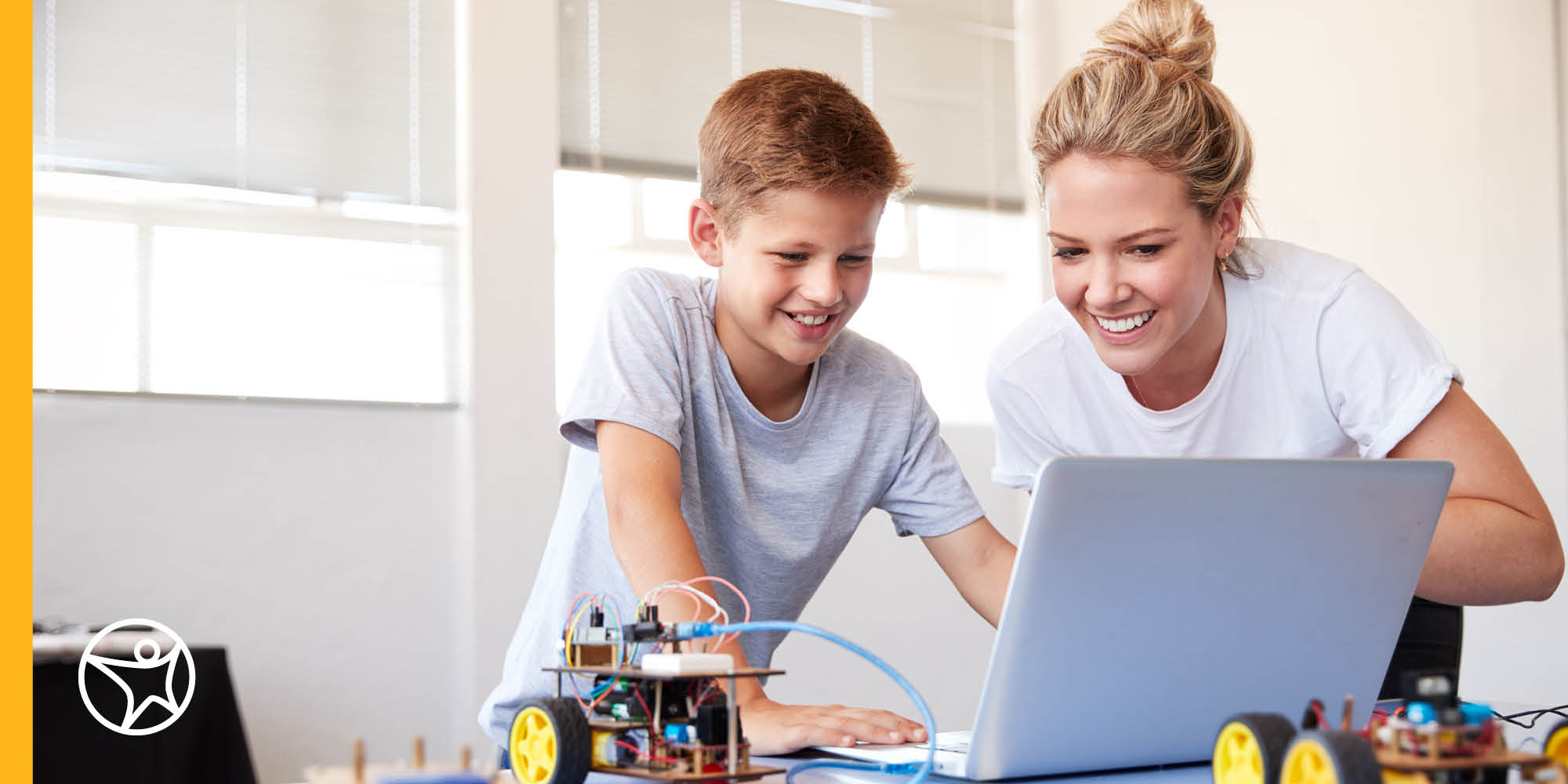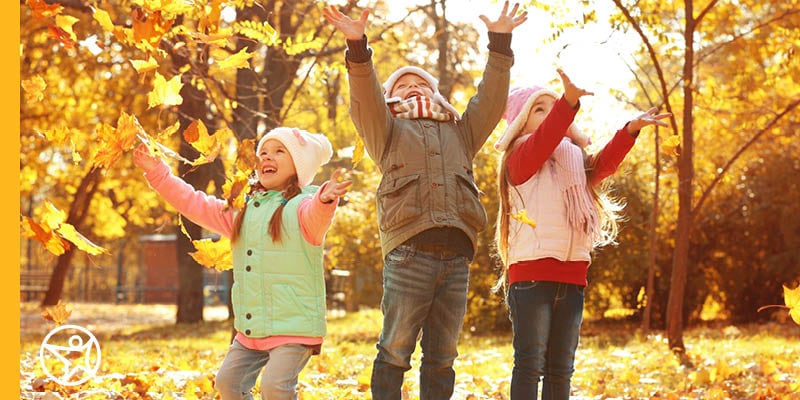9 Common Concerns about Virtual School
byConnections Academy
5 min to read
When you first consider enrolling your child to virtual school, what’s on your mind? Curiosity? Excitement? Doubt? Chances are you feel a combination of all these, especially if you don’t have first-hand experience with virtual learning or if you have online school concerns in general.
To help you decide if online learning is the best choice for your child, start by asking a lot of questions. Make a list to clear your mind, then reach out directly to the school, or even contact the parent of a current student. If you’re wondering, “What are the biggest challenges with online education today?” see if you can find the answers you need in this list of common concerns about online school.
1. Do online school Learning Coaches have to manage class schedules, coursework, and establish routines?
Yes! The child’s Learning Coach—a responsible adult, often a parent or other family member, who works with the student to support their online learning—plays a key role in their success in virtual school.
Learning Coaches do not teach the actual classes, but they help keep students accountable to their school district-designated attendance requirements, make sure students are aware of any important test dates and project due dates, and communicate with their student’s teacher when needed. But they’re not alone! Learning Coaches also rely on the support from their student’s teachers, school counselors, the Learning Coach Support team, and fellow Learning Coaches within their own online community, so they can hit the ground running with their student with confidence.
2. I have more than one student in virtual school. How can I successfully juggle my time between them as their Learning Coach?
Learning Coach involvement typically varies from student to student, especially when it comes to grade level and level of student independence. Younger students typically need more support and guidance from their Learning Coach than older children, but families make guiding multiple students enrolled in virtual school at the same time possible by arranging their schedules based on their child's needs, using multiple Learning Coaches, or even joining a Learning Pod.
3. I’m worried about making mistakes as my child’s Learning Coach.
Many new Learning Coaches feel nervous and worried at some point that they are not doing enough to support their child in online school, but remember, you’re not on your own. Online teachers are there for you and your student. And soon after getting started, you’ll get a better idea of what makes a great Learning Coach and be on your way to becoming a pro.
4. I’m not very tech-savvy. Is this a problem? I want to make sure my child’s schoolwork is submitted properly.
Having the technology skills needed to help a student with online learning is a common concern. Here’s good news: at online schools like Connections Academy, there are tutorials available to families both old and new that can help, including one on how to submit schoolwork and other documents. If you have any trouble submitting work or anything else using system technology, tech support is always available during the week to help troubleshoot any issues.
5. How can I make sure my student gets enough social interaction?
Online school socialization is a common concern when it comes to at-home learning. However, social opportunities are easier to find than you might expect. At online schools like Connections Academy schools, students can often join online clubs and activities, attend school-organized field trips, in-person meetups, and more.
Also, due to the benefits of flexible online school scheduling, families can have time to include extracurricular activities around their community.
6. My child has an individualized education program (IEP). How do I make sure they get the support they need?
Students with IEPs who are enrolled in online public schools like Connections Academy have access to a wide variety of virtual special education services. The curriculum can often be modified to accommodate your student’s needs, and the IEP team can offer virtual direct instruction, indirect instruction, or occupational therapy if needed.
To inquire about your child’s specific IEP needs, contact your prospective online school and speak with an enrollment specialist.
7. There’s a long list of school supplies needed to set up an at-home learning environment. Do I need everything on the list?
Students learning at home through online school options do still need school supplies; however, many supplies are common items you may already have around the house. Unlike other at-home learning options like homeschooling, textbooks and the school curriculum are provided by the student’s school.
The most important required school supplies online school students need are a computer, reliable internet access, and a quiet place in your home to learn. Some online school programs, like Connections Academy, even offer financial assistance or equipment for eligible families.
8. My student tends to get distracted and needs a little extra help staying motivated. How will I be able to keep them engaged and on track?
Easily distracted students enrolled in online school have the benefit of modifying their learning space and learning schedule to eliminate as many distractions as possible.
The flexible scheduling of online school allows students to reprioritize their classes as they see fit. If a class requires more focus, or if they need extra time to mentally shift between subjects, students and their Learning Coach can rework their schedules and routines to create the most optimal learning environment.
Similarly, families can also customize their student’s learning space to eliminate distractions that are usually found in brick-and-mortar schools such as other students or busy classrooms.
9. Would my child get too much screen time if they do school online?
While screentime is a concern many families have, not all screen time is the same. Screen time and learning can go hand-in-hand—as long as that screen time is spent productively and intentionally. Many in-person schools also use personal screens in the classroom, just as many online school programs include off-line materials in their online school curriculum. The benefit of online school is that families can help determine how much screen time their student gets at once, planning breaks away from screens, and additional hands-on activities to supplement their learning.
Make Concerns About Online School a Thing of the Past
While there are many factors to consider while finding the right learning environment for your student, see if an online public school like Connections Academy is the right fit by downloading our eGuide or speaking with an enrollment specialist. Or explore testimonials from real Connections Academy families who have found success in online school.



